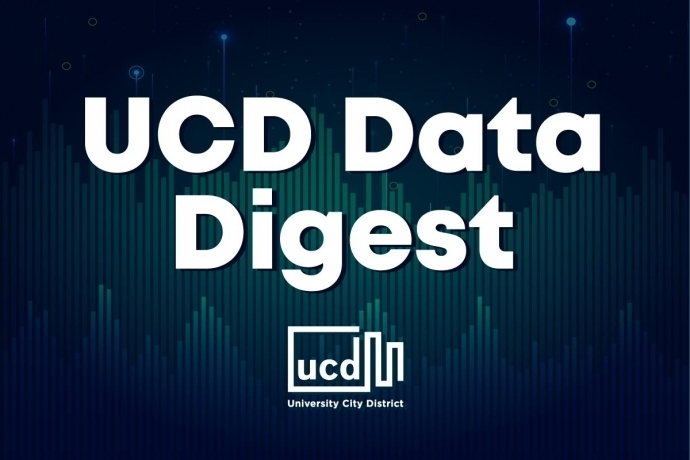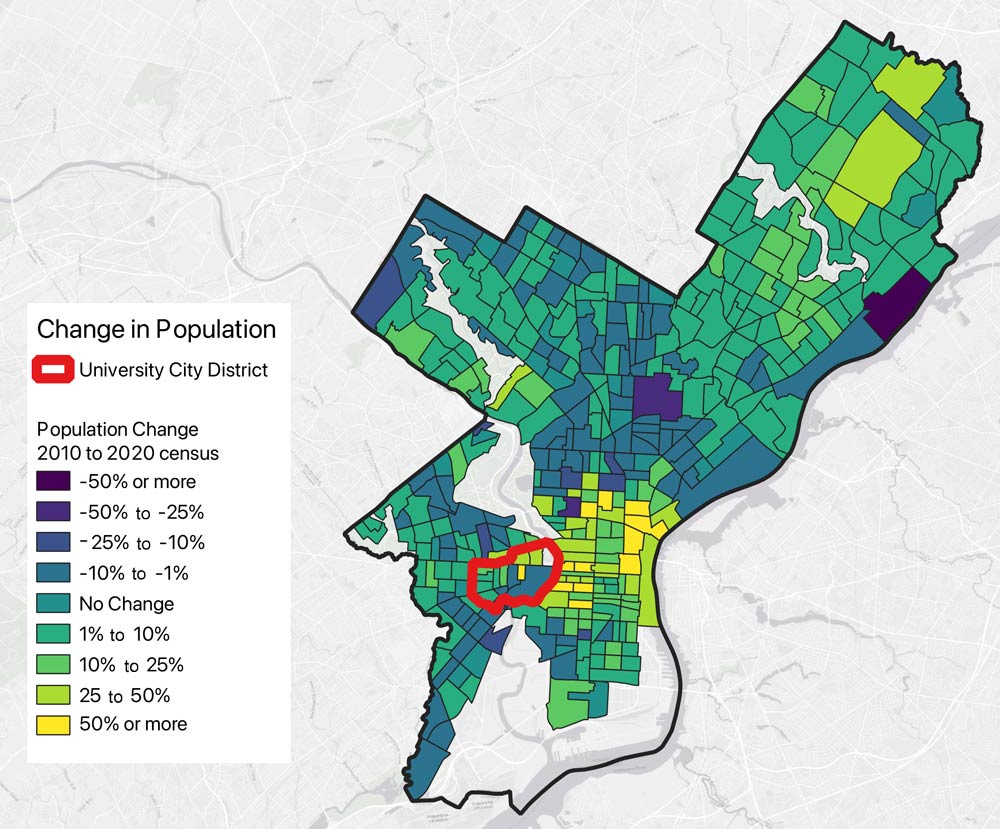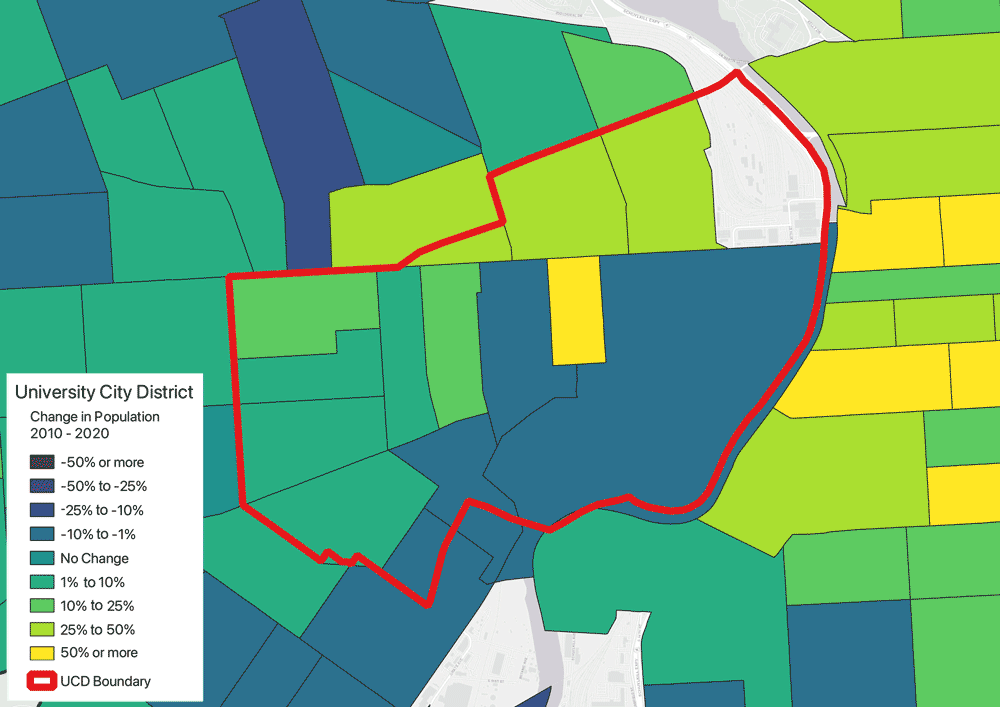
Visitors / Employees
UCD Data Digest: Digging Into Population Numbers from the 2020 Census

According to results from the 2020 census, the city of Philadelphia hit its highest population level since the 1980s. After a modest gain of just .6% in 2010, and 10s of thousands of losses each decade back until 1960, Philadelphia’s population grew by nearly 5% between 2010 and 2020, gaining approximately 75,000 individuals. For the first time since the 1980s, over 1.6 million people reside in the city, and a growing number of them call University City home.
|
University City Census Tracts |
2020 Population |
2010 Population |
Percentage Change |
Numeric Change |
|
369 |
6602 |
6966 |
-5.23% |
-364 |
|
92 |
3974 |
2884 |
37.79% |
1090 |
|
91 |
3934 |
2803 |
40.35% |
1131 |
|
90 |
7694 |
5576 |
37.98% |
2118 |
|
88.02 |
6580 |
6983 |
-5.77% |
-403 |
|
88.01 |
1600 |
988 |
61.94% |
612 |
|
87.02 |
3441 |
3036 |
13.34% |
405 |
|
87.01 |
4347 |
4147 |
4.82% |
200 |
|
86.02 |
3452 |
3010 |
14.68% |
442 |
|
86.01 |
3212 |
2947 |
8.99% |
265 |
|
79 |
4722 |
4553 |
3.71% |
169 |
|
78 |
4358 |
4177 |
4.33% |
181 |
|
77 |
2302 |
2380 |
-3.28% |
-78 |
|
Total |
56218 |
50450 |
11.43% |
5768 |
While making up a small percentage of the land in the city, University City has long been a hub for employment and schooling. Within the boundaries of University City today there's primarily a mix of educational, commercial, and office space, but a significant number of people still live within its boundaries. In 2020, 56,218 people lived in the 13 census tracts that make up the district, up from 50,450 in 2010, an over 11% gain.

Source: US Census Bureau
University City’s population growth has also outpaced the growth rate in the five zip codes that make up West Philadelphia as a whole. In fact, University City’s contributed nearly 85% of the net gain in population, with 5,768 of the 6,790 new residents who have moved to West Philly since 2010.

Source: US Census Bureau
Overall, Philadelphia’s population growth since 2010 has been primarily concentrated in the southern half of the city, roughly below Lehigh Avenue and Temple University. Neighborhoods in North Philadelphia, Northwest Philadelphia, and the upper Riverwards saw either little change or modest declines in population, while University City, South Philly, Fishtown, South Kensington, and the greater Center City area saw the highest percentage increases.
After decades of population loss, it’s encouraging to see a renewed desire from people to live within Philadelphia's limits. While it’s unlikely for an established city like Philadelphia to get back to the high levels of population growth it saw in the late 19th and early 20th century, the increase in population over the past decade points to a recognition of what the city has to offer residents. With an additional 1,100 units of multi-family housing and another 11.1 million square feet of development in the pipeline, the future looks bright for University City’s continued growth.
Stay tuned for the release of our State of University City 2022 publication in January of 2022 for a more thorough look at development updates, population trends, and much more.


